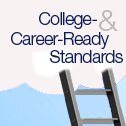A California initiative that blends rigorous academics with career preparation helps students earn more credits in high school and have greater confidence in their career and life skills than their peers in regular programs, according to a new study of the initiative.
The study by SRI International, released Tuesday, is the fifth in a series of annual reports on the Linked Learning initiative. It finds that in addition to earning more credits and being more confident in their skills, students in the program are also more likely to stay enrolled in their districts through high school, and more likely to experience their instruction as rigorous and connected to the world outside school.

To get a picture of Linked Learning in action, take a look at the profile I wrote of the program in 2011, two years after it was officially launched in nine districts. The James Irvine Foundation, its primary sponsor, had been investing in the approach since 2006. What I saw when I visited Linked Learning schools is their refusal to track students into either career coursework or college preparation; the program insists on blending the two. What also sets them apart from typical approaches to career and technical education is their emphasis on real-world work experience, through job-shadowing, internships, and other out-of-school placements.
Linked Learning appears to be paying off for about 15 percent of California’s high school population—the 315,000 predominantly minority, low-income high school students in the network’s nine districts.
Staying in School
The program’s benefits didn’t show up in standardized test scores; Linked Learning students didn’t score significantly better

than their peers by that measure. But they were significantly more likely to stay enrolled in school, and accumulate more credits, than were demographically similar peers in other programs, a pair of statistics that’s particularly notable in a population that’s often at higher risk of dropping out of school.
Linked Learning students also report that their studies were more challenging, and offered them a clearer view of their relevance to the world beyond the classroom. Here are a few highlights of those findings:
- Three-quarters of the students in the program said that their teachers challenged them to understand a difficult topic, for instance, compared with 61 percent of comparison students.
- Two-thirds said their teacher discussed how to apply what they were learning in class to the real world, compared with barely half of comparison students.
- Seventy percent of the students in Linked Learning said they saw connections between their studies and the world outside school, compared with 60 percent of students in regular programs.
More than students in other programs, students in Linked Learning schools report developing a range of skills and dispositions such as perseverance, communication, and organization that are considered important to good jobs and success in college.

The connections that Linked Learning makes to college came through clearly in the new study, as well. Students in the program reported at far greater rates than comparison students that they’d had opportunities to visit college or technical school campuses, or to speak with higher-education representatives. Far more of them also report that they plan to pursue higher education after they graduate. Reflecting that goal, more Linked Learning students reported taking college-entrance tests and submitting college applications than did their peers in traditional programs.
Persistent Challenges
A key tenet of the Linked Learning program is to provide open and equal access to programs for all students, regardless of their academic records. But researchers found student enrollment patterns are creating troubling inequities in a few areas. One is with female students: Girls are underrepresented in pathways with an engineering theme, and overrepresented in pathways with a health-sciences theme. Students with special needs persist in the pathways courses of study at lower rates than those without special needs.
While Linked Learning puts a premium on connecting students’ classroom learning with the real world of work, it is contending with some rough spots in doing so. The study reports that while districts have done well lining students up with job shadowing and mentoring in the early grades, when they are in the “career exploration” stage of their studies, they haven’t done as well securing internships and practicum placements later in high school—during their “career preparation” years.
The SRI researchers suggested that this was due to teachers’ and administrators’ limited capacity to make the community connections that facilitate career-preparation placements. Students’ own lives pose challenges to internship placements as well, the researchers said, since many students lack transportation to such activities, or need to use their time outside school for paying jobs.
